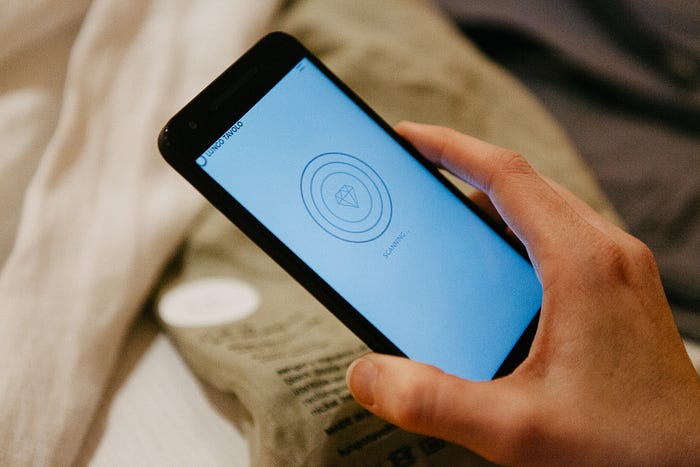The two main questions that William Chitangala asked as he first addressed the crowd was “who made your clothes” and “do you even really want to know.” Knowing that most people feel uneasy answering these questions was the motivation behind joining the three day hackfest hosted by BigchainDB, Microsoft and innogy. This uneasiness is also something he sees as an opportunity to rethink the industry as whole.
According to William, people want a few things when buying luxury brand clothes. They want provenance of the item, to know where it truly came from, and they want trust, that what they paid for was sustainably and ethically produced. Consumers also want usability both online and offline, a positive customer experience and ultimately, they want a high value product. LungoTavolo has focused their sights on being a brand that truly fulfils those desires and engages the customers in the process.
“Luxury brands should be sustainable and ethical but they aren’t,” he said. “This is where we have to get started and this is where blockchain technology can add value.”
The Italian fashion house includes detailed product information on the labels of their one-of-a-kind designs, like the name of the item, the season, material used and care instructions. They joined the hackfest with hopes of elevating this and designing a prototype where Radio-Frequency Identification technology, RFID, could take their labels to the next level.
Riddle&Code provides the technology to do exactly that. They are a company that produces IoT hardware to connect physical objects to the blockchain. Tom Fuerstner, CFO of Riddle&Code, sees the tagging market as one of the main industries the company is set to disrupt. Their flexible, smart tags have two chips, a Near Field Communication or NFC tag and a crypto tag. With the tags you can do two factor authentication, they can be turned into a blockchain or Bitcoin wallet and can be embedded into almost everything. They are watertight and were designed to built into textiles.

On the final day of the hackfest, William presented a prototype of how this could all work, complete with a web app interface designed by Marius Goebel, a frontend UX developer.
By embedding Riddle&Code’s NFC tag into LungoTavolo garments, consumers simply scan the tag with their phone and then directly within the app, they could see the provenance of that item with details of which factory, in which country the piece was made in, gain insights into the production process and influences. The ethical information would also be displayed as would which edition they purchased, ie edition 40 out of 100 total pieces made. Customers could sync their wardrobe with the pieces they’ve purchased and have suggested items displayed to complete their look. They could also use it as customer service point with a live chat for example or to check the status of their orders. All of the data transmitted and collected by the NFC tag would be stored on BigchainDB and allow LungoTavolo to query the data and for better insights and more detailed metrics. These elements collectively make for a stronger brand with ensured quality, a smooth customer experience and better service which translates into better customer relationships and retention.

“There is a growing awareness about the production process of fashion, which is the second largest producer of waste on earth,” said William. “Luxury demands great design, not just in the final product. The fashion makers and designers need to see this as their responsibility.”
William sees initiatives such as these as a first step to what he refers to as the “internet of luxurious thing” where luxury good and people are connected, creating genuine and individual ecosystems of things, experiences and identities.
He argues that this model could also be used for cars, luggage, the art you buy, things that have remained disconnected as physical items but are interrelated in our own lives.
“People have a hard time connecting with technology sometimes,” he said. “Let’s make technology a luxury product, something you want to show off with social value. The story can be told and backed by blockchain technology and in doing so create a way to facilitate a whole aesthetic vision of one’s self.”
About LungoTavolo
The house of LungoTavolo develops innovative techniques and cuts, reducing the complexity to achieve a result of refined simplicity. Handcrafted one by one, all creations are designed by Sergio Perrucci and produced by C-Work-S, the LungoTavolo collection comprises an essential group of garments and ornaments intended for men and women who love to feel well in their skin. http://www.lungotavolo.it/.
About Riddle&Code
Riddle&Code is a unique way to enable secure and trusted human to machine interaction of any kind. They deliver an integrated chipset and software solution based on our firmware and patented middleware. They have combined a proprietary Bitcoin and Blockchain derived technology as a global certification service.This makes Riddle&Code the first and only company to build blockchain specific hardware that can sit on any IoT device, physical or digital goods. http://riddleandcode.com/


Would you like to share your thoughts?